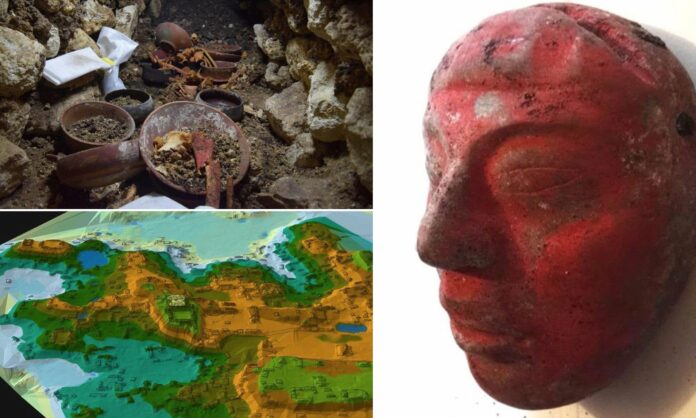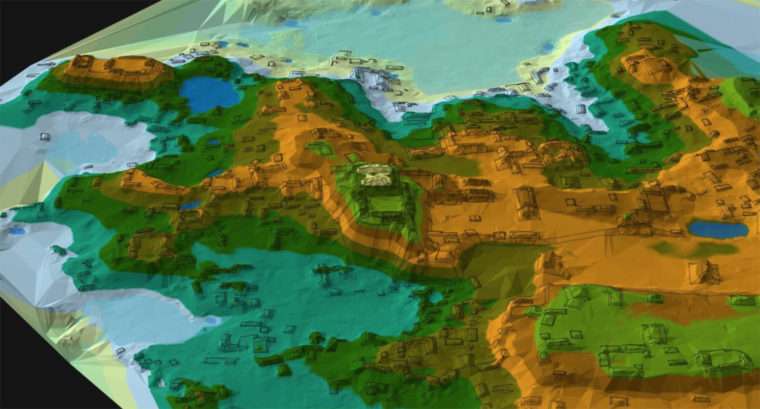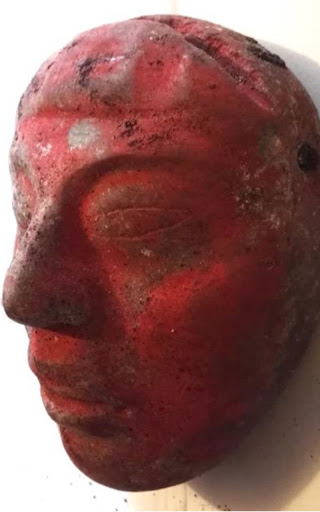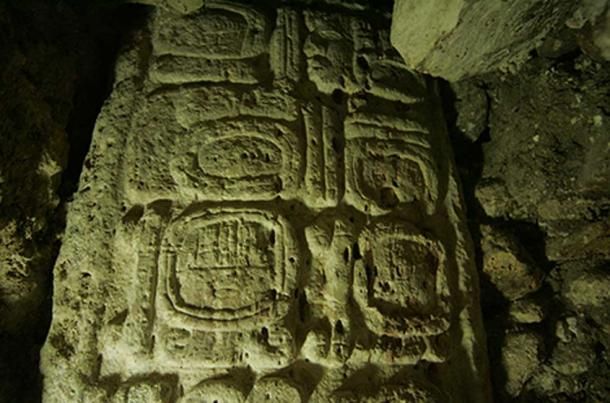Unearthing History: Oldest Royal Tomb of the Classic Maya Centipede Dynasty Discovered in Guatemala
 WakaTombFaceHorizontal-640×1024.jpg
WakaTombFaceHorizontal-640×1024.jpg
The Ancient City of El Perú-Waka’

El Perú-Waka’, an ancient Maya city located in present-day northwestern Petén, Guatemala, is one of the most significant archaeological sites in the region. Rediscovered by petroleum exploration workers in the mid-1960s, this site is the largest known in the Laguna del Tigre National Park, situated within Guatemala’s Maya Biosphere Reserve. The El Perú-Waka’ Regional Archaeological Project began scientific investigations in 2003, which have since revealed that Waka’ was a crucial political and economic center during the Classic period of the lowland Maya civilization. Through extensive excavation and research, many aspects of Maya life, including their rituals and daily activities, have been reconstructed, offering invaluable insights into this ancient community.
The Oldest Royal Tomb in Northern Guatemala’s History

According to reports, the most recent and extraordinary discovery at El Perú-Waka’ is that of a royal tomb, unearthed by Guatemalan archaeologists working with the U.S.-Guatemalan El Perú-Waka’ Archaeological Project. Ceramic analysis has dated the tomb to 300-350 AD, making it the earliest royal burial site identified in this region. The tomb is a significant find not only because of its age but also because it marks the early history of the Wak – or Centipede – dynasty.
David Freidel, a professor at Washington University and leader of the research team, emphasized the cultural importance of this discovery. He explained that the Classic Maya revered their rulers as divine beings, both in life and after death. The royal palace acropolis, where the tomb was found, became a sacred site, much like the burial grounds of ancient Saxon kings in England. This reverence for royal burial sites reflects the deep spiritual and cultural beliefs of the Maya civilization.
Unveiling the Monument of Lady Ikoom

El Perú-Waka’ has proven to be an archaeological treasure trove, revealing numerous royal tombs and sacrificial burials dating back to the fifth, sixth, and seventh centuries AD. One of the most fascinating discoveries in recent years is a stone monument with hieroglyphic text, found beneath a temple at the site. This monument, known as El Perú Stela 44, dates back approximately 1,500 years and provides critical insights into the kingdom of Wak and its relationships with other powerful Maya states.
The hieroglyphic text on the monument suggests it was commissioned by King Wa’oom Uch’ab Tzi’kin to honor his father, King Chak Took Ich’aak. Additionally, the text tells the story of a lesser-known princess, Lady Ikoom, whose descendants played a crucial role in the dynastic struggles between two of the most powerful Maya royal families. Lady Ikoom is a predecessor to the renowned Maya Snake Queen Lady K’abel, who ruled El Perú-Waka’ with her husband for over 20 years.
The Enigmatic “Burial 80” and Its Royal Status

In 2017, archaeologists announced the discovery of what they refer to as “Burial 80,” a tomb that may date back to the early years of the Wak dynasty. Although the identity of the ruler entombed remains unknown, the archaeologists speculate that it could be King Te’ Chan Ahk, a ruler who governed in the early fourth century AD. The tomb’s royal status was confirmed by the discovery of a jade mask depicting the ruler with the Maize God’s forehead hair tab, a symbol commonly associated with Maya kings.
The jade mask, along with other offerings found in the tomb, such as ceramic vessels, spondylus shells, jade ornaments, and a shell pendant carved in the shape of a crocodile, further emphasizes the royal significance of the burial site. These findings offer a deeper understanding of the rituals and beliefs surrounding death and the afterlife in the Maya civilization.
Conclusion
The discovery of the oldest royal tomb of the Classic Maya Centipede Dynasty at El Perú-Waka’ is a landmark in the study of ancient Maya history. This find not only enriches our knowledge of the Wak dynasty but also provides a clearer picture of the political and cultural landscape of the Classic Maya civilization. As archaeologists continue to explore this ancient city, we can expect more revelations that will deepen our understanding of one of history’s most enigmatic and fascinating civilizations.
Video
News
The Hanging Temple: China’s 1,500-Year-Old Cliffside Marvel of Faith and Engineering
The Hanging Temple: China’s 1,500-Year-Old Cliffside Marvel of Faith and Engineering Perched precariously on the cliffs of Mount Heng in Shanxi Province, China, the Hanging Temple, also known as Xuankong Temple, Hengshan Hanging Temple, or Hanging Monastery, is an architectural…
The Willendorf Venus: A 30,000-Year-Old Masterpiece Reveals Astonishing Secrets
The Willendorf Venus: A 30,000-Year-Old Masterpiece Reveals Astonishing Secrets The “Willendorf Venus” stands as one of the most revered archaeological treasures from the Upper Paleolithic era. Discovered in 1908 by scientist Johann Veran near Willendorf, Austria, this small yet profound…
Unveiling the Maya: Hallucinogens and Rituals Beneath the Yucatán Ball Courts
Unveiling the Maya: Hallucinogens and Rituals Beneath the Yucatán Ball Courts New archaeological research has uncovered intriguing insights into the ritual practices of the ancient Maya civilization. The focus of this study is a ceremonial offering found beneath the sediment…
Uncovering the Oldest Agricultural Machine: The Threshing Sledge’s Neolithic Origins
Uncovering the Oldest Agricultural Machine: The Threshing Sledge’s Neolithic Origins The history of agricultural innovation is a fascinating journey that spans thousands of years, and one of the earliest known agricultural machines is the threshing sledge. Recently, a groundbreaking study…
Nara’s Ancient Sword: A 1,600-Year-Old Protector Against Evil Spirits
Nara’s Ancient Sword: A 1,600-Year-Old Protector Against Evil Spirits In a remarkable discovery that has captured the attention of archaeologists and historians alike, a 7.5-foot-long iron sword was unearthed from a 1,600-year-old burial mound in Nara, Japan. This oversized weapon,…
The Inflatable Plane, Dropped Behind the Lines for Downed Pilots
Experimental The Inflatable Plane, Dropped Behind the Lines for Downed Pilots The Inflatoplane from Goodyear was an unconventional aircraft developed by the Goodyear Aircraft Company, a branch of the renowned Goodyear Tire and Rubber Company, also famed for the Goodyear…
End of content
No more pages to load











